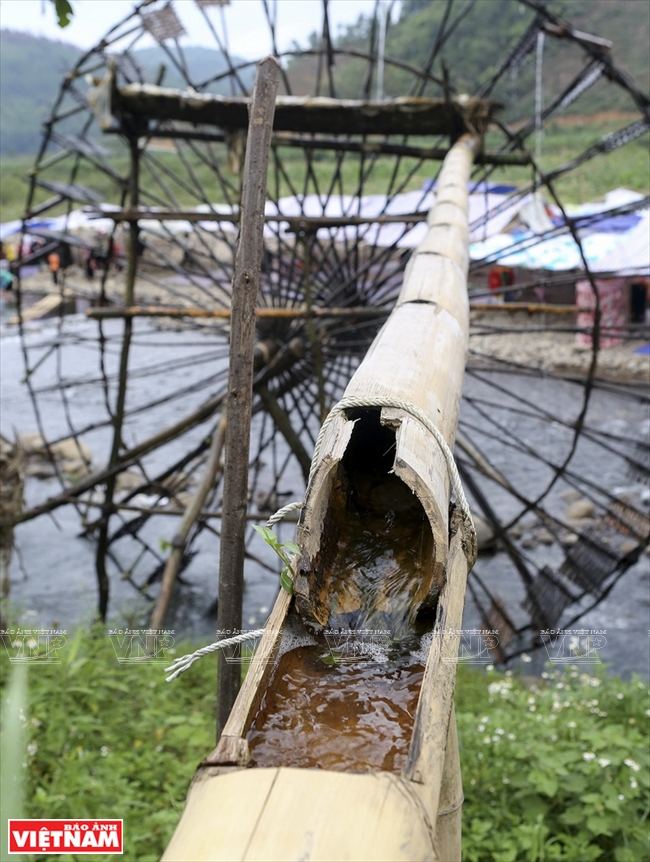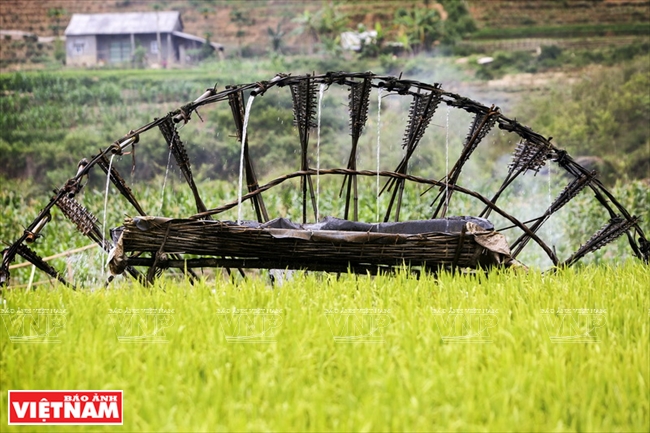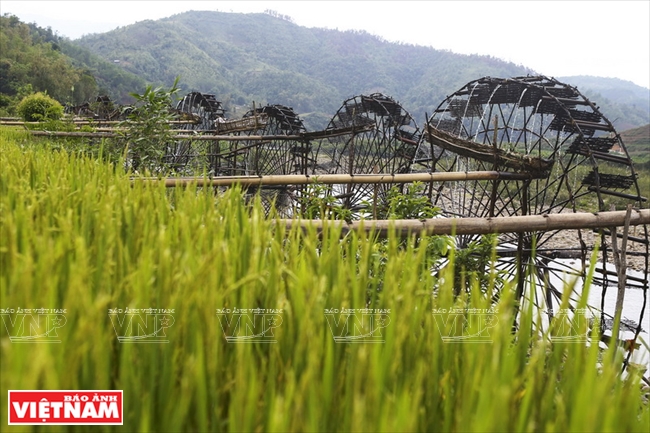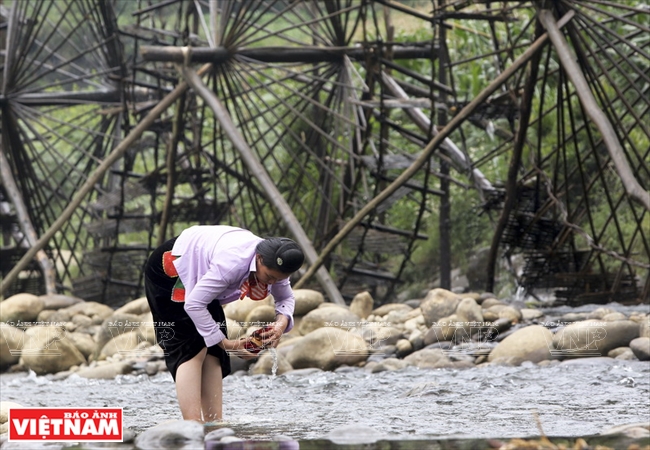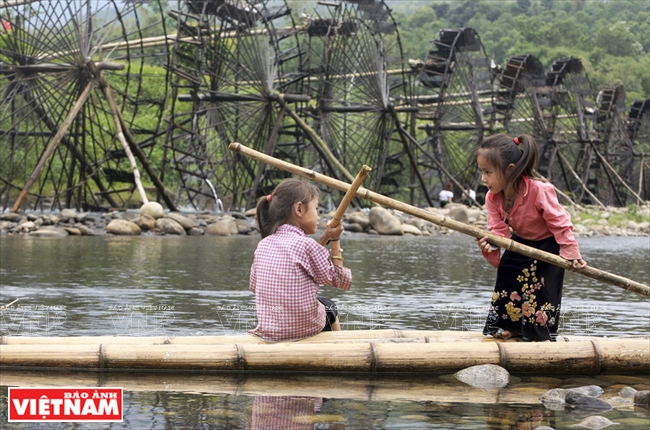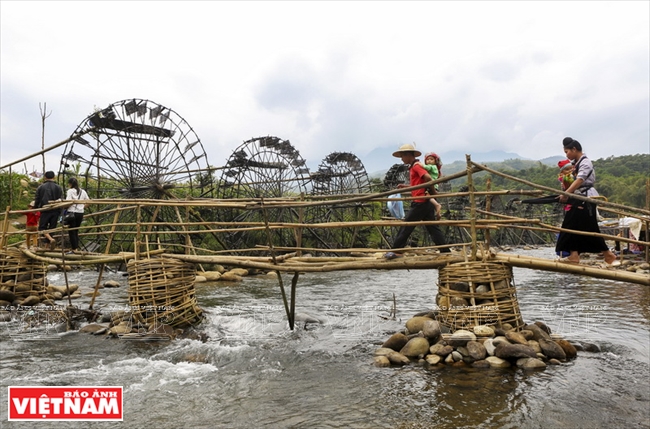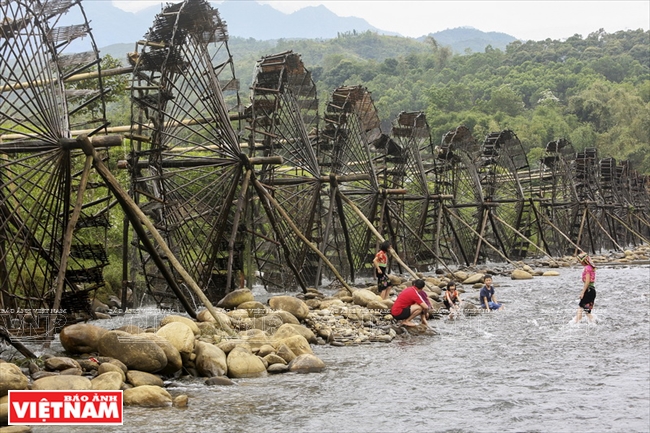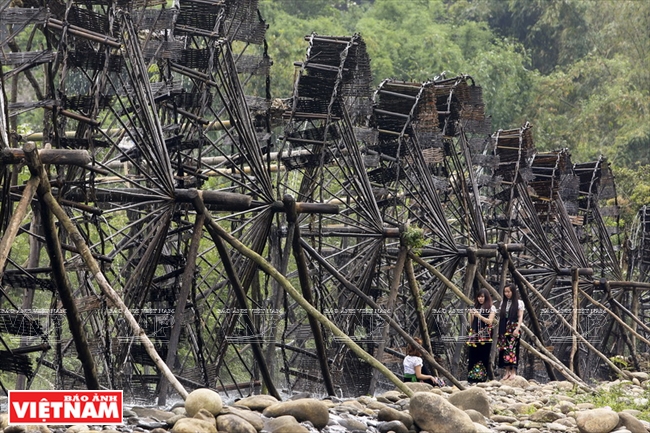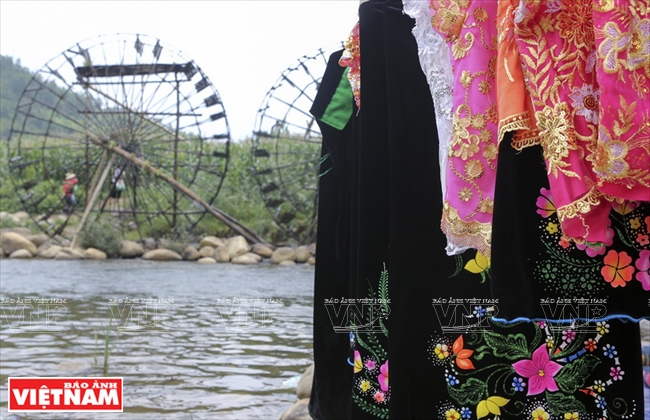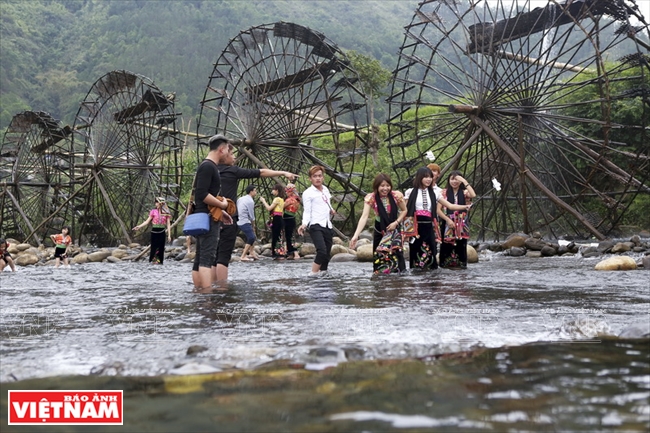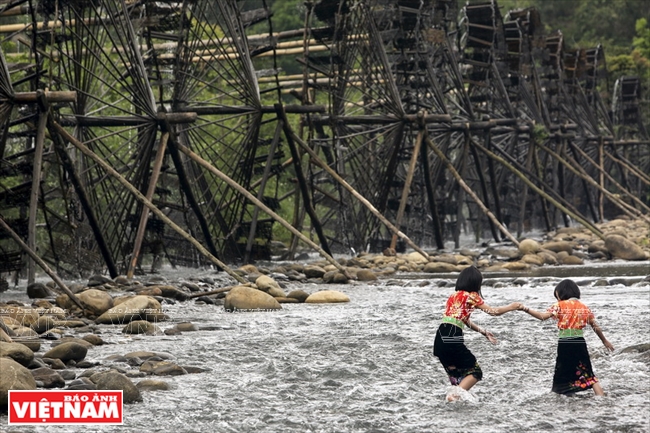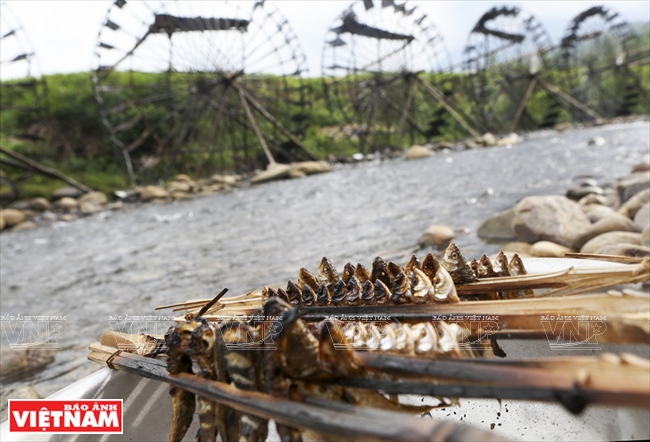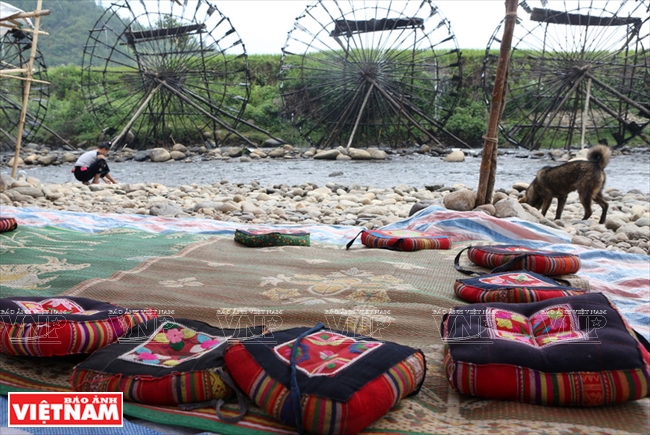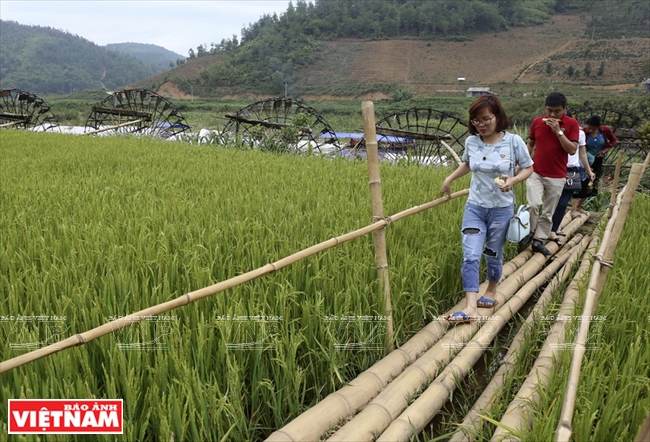“Pumping machines” in the Muong area
For people of the Thai, Muong, Tay, Nung ethnic groups living in the northwest, a water wheel is an essential agricultural tool that helps locals deliver water from the lower rivers or streams to the higher fields. People passing by large fields like Muong Thanh (Dien Bien), Muong Lo (Yen Bai) often catch sight of water wheels continuously spinning to take water to a higher place for irrigation of the rice during the growing season.
|
“The first thing that the Thai and Muong people do when they settle down is to find a large valley with surrounding mountains convenient for agriculture as well as to direct water from the mountains to their hamlet and from streams to their fields. Depending on the water current and demand, the number of water wheels will be decided. Sometimes scores of water wheels are built in an area. Small water wheels often have diameters of around 2.5m while the big ones can stretch to 7-8m. The water wheel is representative of this agricultural civilisation.” (Culturist Phan Cam Thuong, quoted in Dai Doan Ket) |
Perhaps the area with the most beautiful water wheels in the whole northwest is Na Khuong. According to Lo Van Cac, during the ninth lunar month of each year, in order to provide enough water for scores of hectares of rice paddies, villagers build water wheels along the Nam Mu River to deliver water to their plants. So far, 25 water wheels have been built along the river.
To build a water wheel, the Thai in Na Khuong choose a log as its horizontal axle. The log must be light, resilient and water resistant. Spokes of the wheel are made of straight stems of vau, a type of bamboo. Rattan woven blades are added to the outer rim of the wheel so that the water power can drive the wheel and deliver water higher.
Water wheels in Na Khuong Hamlet are often 6m high. They are only used before the flooding season. When the floods come, water wheels are often carried away by the raging water. They are rebuilt in time for the next planting.
The Thai people often compare water wheels to huge pumping machines that bring water to their fields. These water wheels spin continuously, delivering water for farming and also creating a simple but beautiful image closely connected to the local life for visitors to admire and explore.
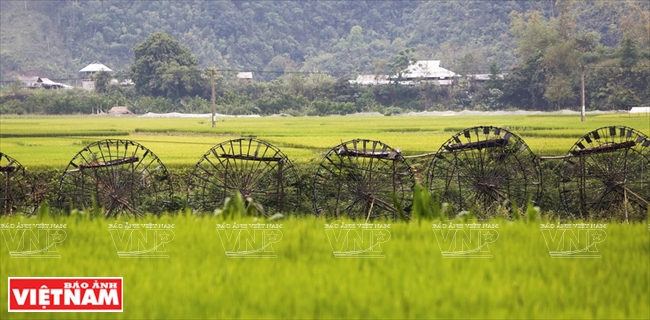 Water wheels in the middle of rice paddies in Na Khuong.
Water wheels in Na Khuong have become the essence in the image of ethnic life.
|
Experience agricultural tools from older times
According to Lo Van Cac, in the beginning villagers were surprised by tourists coming to see and take pictures and videotape the water wheels by the Nam Mu river.
|
“According to ticket sales, in the first quarter of 2017, more than 12,000 visitors came to Na Khuong, including many foreigners. At the present time, 20 households in the hamlet are involved in tourism services, earning an average of 500,000-600,000 dong each day.” (Deo Van Tinh, Chairman of the People’s Committee of Ban Bo Commune) |
In order to meet the tourists’ demand for local food as well as renting ethnic costumes for photos, his family and other households in the hamlet build stalls by the river to provide these services.
The area is the most crowded during weekends. Tourists are mostly office-workers from Lai Chau and Sapa (Lao Cai). As Na Khuong hamlet is only 40km away from this tourist capital of the northwest, many travel agencies have launched tours for tourists in Sapa to cross Hoang Lien Son Mountain to enter Lai Chau and explore this area.
Tu Huu Ha, Chairman of the People’s Committee of Tam Duong District informed me that there are a large number of tourists that will come to Na Khuong Hamlet in 2017, which is a welcome sign for tourism development in the district. He also revealed that in the future, the district’s authority will examine further investment to promote this area so that it can attract more tourists.
Na Khuong is also nominated to be recognised as a tourist attraction by the Department for Culture, Sports and Tourism of Lai Chau province so that it can plan for further development into a signature eco-tourist destination of Tam Duong District in particular and Lai Chau province in general by 2020.

